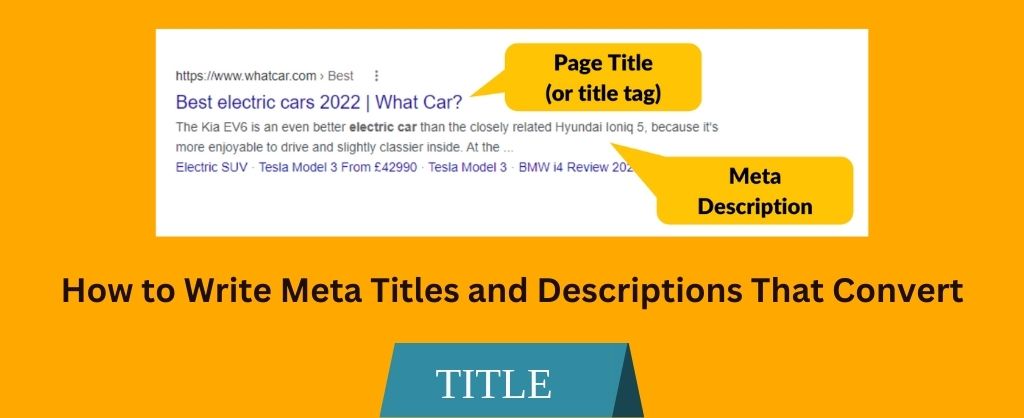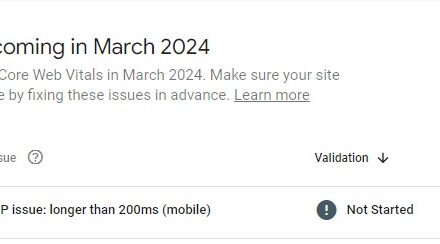How to Write Meta Titles and Descriptions That Convert

Meta titles and descriptions are critical on-page SEO elements that can make or break your rankings and click-through rates. With the right optimization tactics, you can craft compelling titles and descriptions that drive more organic traffic to your site.
Essential Meta Title and Description Tips for Higher Rankings
In this comprehensive guide, we’ll cover everything you need to know about optimizing meta titles and descriptions for higher rankings and better CTRs. You’ll learn:
- Best practices for writing effective titles and descriptions
- How to incorporate important keywords
- Tips for creating clickable titles and descriptions
- How to optimize titles and descriptions for voice search
- Tools to analyze and improve your titles and descriptions
- Key meta title and description metrics to track
- Common title and description mistakes to avoid
By following the tips in this guide, you’ll be able to create SEO-friendly titles and descriptions that capture attention, improve click-through rates, and boost your web pages higher in the search engine results pages.
Why Meta Titles and Descriptions Matter for SEO
Meta titles and descriptions serve two critical functions:
- They inform searchers about the content on your pages
- They influence click-through rates and search rankings
Meta titles appear as the clickable headline for your pages in search engine results pages (SERPs). Descriptions are the preview text under titles that provide more context.
Together, compelling titles and descriptions pique searchers’ interest and entice them to click through to your site instead of competing pages. They help searchers determine if your blog posts or webpagecontains the information they’re looking for.
In addition to attracting search traffic, titles and descriptions also impact SEO rankings. Search engines analyze these page elements to understand what your pages are about. Relevant titles and descriptions optimized with keywords can improve your pages’ relevance for searches targeting those terms.
Given their importance for both SEO and user experience, it’s essential to optimize your meta titles and descriptions properly.
Follow these best practices when optimizing meta titles and descriptions:
Target Important Keywords
- Research target keywords and topics your ideal customers search for. Include these terms naturally in titles and descriptions.
- Focus on keywords with higher search volumes and less competition for the best ROI. Long-tail variations can also be effective.
- Don’t over-optimize! Keyword stuffing could trigger search engine penalties.
Craft Compelling Titles
- Titles should be clear and succinct. Get to the point quickly using keywords.
- Use conversational language to create interest. Ask questions, use imperatives like “Discover” or “Learn.”
- Include primary keywords toward the beginning of titles.
- Keep titles between 50-60 characters. Longer titles may get cut off in SERPs.
Write Descriptive Description Summaries
- Descriptions should provide an overview of page content, not restate the title.
- Open with a hook using keywords to attract searchers’ attention.
- Summarize the value readers will get from the page. Include keywords contextually.
- Write descriptions 150-320 characters long. Anything outside that may get truncated.
Optimize for Long-Tail Keywords and Questions
- Include targeted long-tail keyword variations in titles and descriptions. These precise searches have less competition.
- Answer common customer questions with titles and descriptions to attract searchers.
Update and Refresh Content
- Revisit titles and descriptions regularly to improve pages targeting new keywords.
- A/B test versions and track CTRs to optimize further.
By following these tips, you can craft titles and descriptions aligned with searcher intent that capture attention and clicks in SERPs.
How to Incorporate Keywords Effectively
One of the biggest meta title and description challenges is working important keywords in naturally without over-optimizing. Here are some tips:
- Do keyword research to find high-potential target keywords to focus on.
- Prioritize 1-2 primary keywords to include in each title and description.
- Place these primary keywords toward the beginning of titles so they catch the eye.
- Use matching long-tail variations and semantic keywords in descriptions.
- Include auxiliary keywords and related terminology contextually throughout.
- Mention brands, products, services, and other key entities relevant to the page.
- Use tools like Google Keyword Planner to compare monthly searches and competition to guide keyword selection.
- Avoid excessive repetition and don’t overstuff with keywords. Read each draft out loud.
- Include keywords naturally as you summarize page content. Imagine explaining it to a friend.
With strategic keyword placement, you can optimize titles and descriptions without sounding spammy.
Tips for Creating Best Meta Titles
Crafting compelling meta titles that entice searchers to click to your site takes skill. Here are some tips:
- Use emotional keywords like “secrets,” “mistakes,” “tips,” “best” to pique interest.
- Ask questions in titles to make searchers curious about the answer on your page.
- Use numbers and lists to convey valuable information at a glance, like “10 Must-Follow SEO Tips.”
- Focus on providing searchers value in titles through solutions, not features.
- Leverage power words like “Improve,” “Build,” “Maximize,” “Increase” that indicate useful content.
- Include keywords high on relevance and low on competition for the topic.
- Tweak and A/B test title versions to determine which generate higher CTRs.
- Keep titles succinct. Legibility falls drastically beyond 60 characters.
- Use odd numbers like “7 Common SEO Mistakes” which perform better than even numbers.
- Adjust titles over time as search trends change for the target keyword.
With compelling, benefit-driven titles containing strong keywords, you can create pages that stand out and compel searchers to click through.
How to Write Meta Descriptions that Convert
Converting visitors into leads and customers after they click from the SERPs requires compelling descriptions. Here are optimization tips:
- Open with a power hook using emotional keywords to get attention fast.
- Emphasize the unique value the page offers through benefits and tips.
- Speak directly to the ideal searcher for the keyword with “you” language.
- Use conditional power words like “if/then” to engage readers. “If you want X, this page will show you how.”
- Include a clear call-to-action toward the end driving desired behavior.
- Use keywords naturally to reinforce relevance, but don’t over-optimize.
- Craft an authoritative tone using expert language to build trust and credibility.
- End descriptions with ellipses to create cliffhanger intrigue for searchers.
- Test different formats like problem/solution, question/answer, before/after.
- Monitor keyword rankings and on-page conversion rates to optimize further.
With compelling descriptions optimized for conversions, you can turn clicks from searchers into more customers for your business.
Optimizing for Voice Search Questions
With the rise of voice search, more queries are coming in the form of natural language questions. Here are some tips for optimizing titles and descriptions to attract these searchers:
- Research common voice search questions around your topics and include them in titles.
- Start titles with question words like “How,” “What,” “Why,” and “When” to match voice queries.
- Use conversational language and first-person wording in descriptions.
- Describe how your content provides the answer the searcher is looking for.
- Include relevant questions in titles and descriptions to signal they will be answered.
- Feature instructional keywords like “steps,” “tutorial,” and “guide” for how-to queries.
- Test pages optimized for voice search questions and measure increases in clicks and conversions.
By optimizing for voice searchers’ question-based intent, you can attract more of this growing segment of search traffic.
Tools to Analyze and Improve Meta Titles and Descriptions
There are a variety of tools available to evaluate your current title tags and descriptions and identify areas for optimization. Here are some top options:
Yoast SEO Plugin – One of the most popular SEO plugins for WordPress, it analyzes titles and meta descriptions on your pages and generates an optimization score.
SEO Site Checkup – Enter a URL and get an SEO audit of title tags and meta descriptions, including length, keyword usage, and readability.
Google Search Console – Provides data on indexed titles and descriptions along with clicks and impressions to optimize further.
Google Analytics – Review click-through rates from search queries to see which titles and descriptions are performing best.
MozBar – Browser toolbar that shows how your titles and meta descriptions appear in SERPs compared to rankings.
Titan – SEO crawler that audits title tags and meta descriptions, checking for optimization opportunities.
These tools, combined with keyword research and A/B testing optimized versions, can help improve the effectiveness of titles and descriptions.
Key Meta Title and Description Metrics to Track
To determine if your optimized titles and descriptions are effective, track these key metrics:
Click-Through Rate – Compare search impression vs. clicks to see which titles and descriptions perform best.
Rankings Report – Monitor where pages rank for target keywords to correlate with title and description changes.
Traffic From Search – Analyze search traffic to see if optimized titles and descriptions increase organic visits.
Conversion Rates – For ecommerce sites, track conversion rates from organic search to see if title/description changes impact sales.
Readability Scores – Check Flesch-Kincaid, Fog Index, etc. to ensure text is readable and engaging.
Keyword Usage – Monitor primary keyword volume and density to avoid over-optimization.
By regularly reviewing these metrics, you can refine titles and descriptions and develop best practices for optimizing in the future.
Common Meta Title and Description Mistakes to Avoid
There are a few common mistakes brands make that undermine the effectiveness of titles and descriptions. Be sure to avoid:
- Generic, boring titles like “Homepage” or “About Us” that won’t engage searchers.
- Overstuffing with excessive keywords which reads unnaturally.
- Repeating the company name or domain when it adds no value.
- Using identical or near-identical titles and descriptions across pages.
- Going over the recommended character limits for titles and descriptions.
- Forgetting to update titles/descriptions when content changes over time.
- Not having any meta description so search engines generate unoptimized snippets.
- Focusing too much on keywords over providing real user value.
By being mindful of these common pitfalls, you can craft title tags and descriptions that help, not hurt, your pages’ discoverability and click-through rates.
Conclusion
Optimizing meta titles and descriptions should be a priority for any effective SEO strategy. Compelling titles and descriptions signal search engines that your pages offer relevant content for search queries. More importantly, they entice searchers to click through to your site from SERPs.
With the right mix of keywords, emotional hooks, and clear page value summaries, you can create titles and meta descriptions that boost your organic traffic and improve conversions. Use this guide’s tips to start better optimizing these two critical on-page elements today.
Focus on providing searchers value through clear, clickable titles and descriptions. Track keyword rankings and conversion metrics over time to refine your optimization efforts. With strategic titles and descriptions, you can reach more of your ideal audience and grow your business.









